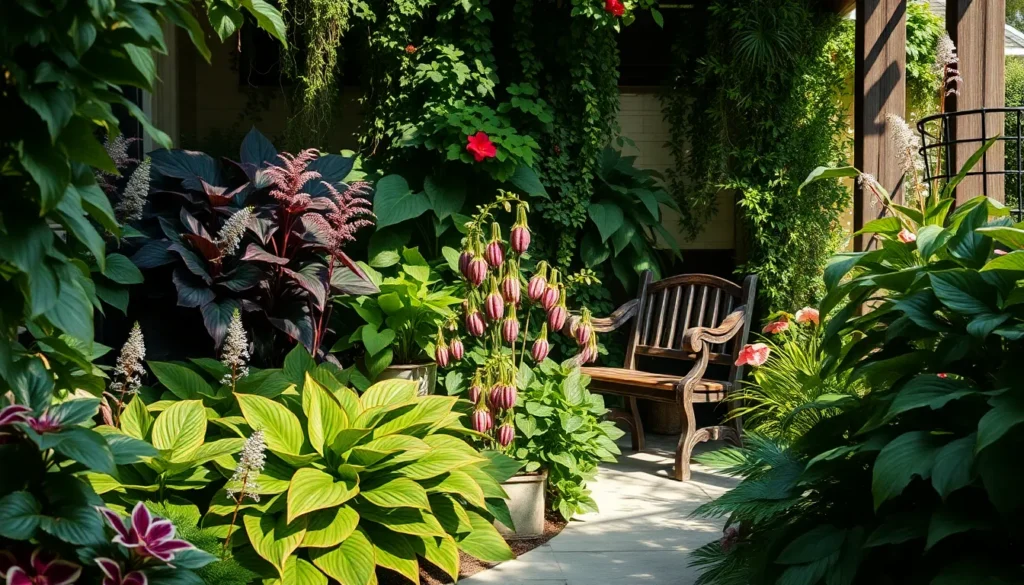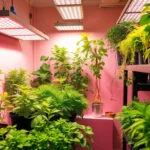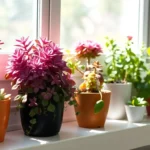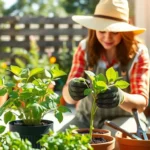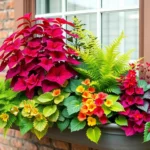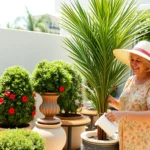We’ve all been there – staring at those shadowy corners of our yard wondering what on earth could possibly thrive in such dim conditions. Whether it’s that shaded patio under your deck or the north-facing garden bed that never sees direct sunlight, finding the right plants for low-light outdoor spaces can feel like an impossible puzzle.
But here’s the exciting truth: countless stunning plants actually prefer these cooler shadowy spots over blazing sun. From lush hostas with their dramatic foliage to delicate astilbe flowers that dance in the breeze, shade gardens can be just as vibrant and beautiful as their sun-soaked counterparts.
We’re about to transform your understanding of what’s possible in those forgotten dark corners of your outdoor space. Get ready to discover the most resilient and gorgeous low-light plants that’ll turn your shaded areas into the envy of every neighbor who walks by.
Choose Shade-Loving Flowering Plants for Continuous Color
Adding flowering plants to your shaded outdoor spaces creates stunning visual appeal throughout the growing season. We’ve selected these proven performers that deliver reliable blooms and colorful displays in low light conditions.
Impatiens for Vibrant Blooms All Season
Impatiens produce continuous flowers from spring until the first frost in shaded locations. These annual plants thrive in partial to full shade and offer blooms in colors like pink, white, red, orange, and purple. We recommend spacing impatiens 6-12 inches apart in containers or garden beds for optimal growth.
Watering requirements stay consistent as impatiens prefer moist but well-drained soil. New Guinea impatiens varieties tolerate slightly more sun than traditional impatiens while maintaining their shade-loving nature. Deadheading spent blooms encourages more flower production throughout the season.
Begonias for Low-Maintenance Beauty
Begonias deliver stunning flowers and attractive foliage with minimal care requirements in shaded areas. Wax begonias feature glossy leaves and small clustered flowers in shades of pink, red, and white. Tuberous begonias produce larger, more dramatic blooms in vibrant colors including yellow, orange, and salmon.
Planting begonias in containers allows easy movement to adjust light exposure as needed. These plants perform best in morning sun with afternoon shade protection. Fertilizing every 2-3 weeks with balanced liquid fertilizer promotes healthy growth and abundant flowering.
Caladiums for Colorful Foliage Display
Caladiums create dramatic color displays through their heart-shaped leaves rather than flowers. These tropical plants showcase foliage patterns in combinations of green, white, pink, red, and silver. We plant caladium bulbs after soil temperatures reach 70°F for successful establishment.
Height varies by variety from 8 inches to 24 inches tall depending on the cultivar selected. Popular varieties include ‘White Queen’ with white and green leaves and ‘Red Flash’ featuring red centers with green edges. Caladiums prefer consistent moisture and protection from strong winds that can damage their delicate leaves.
Select Hardy Perennials That Thrive in Low Light
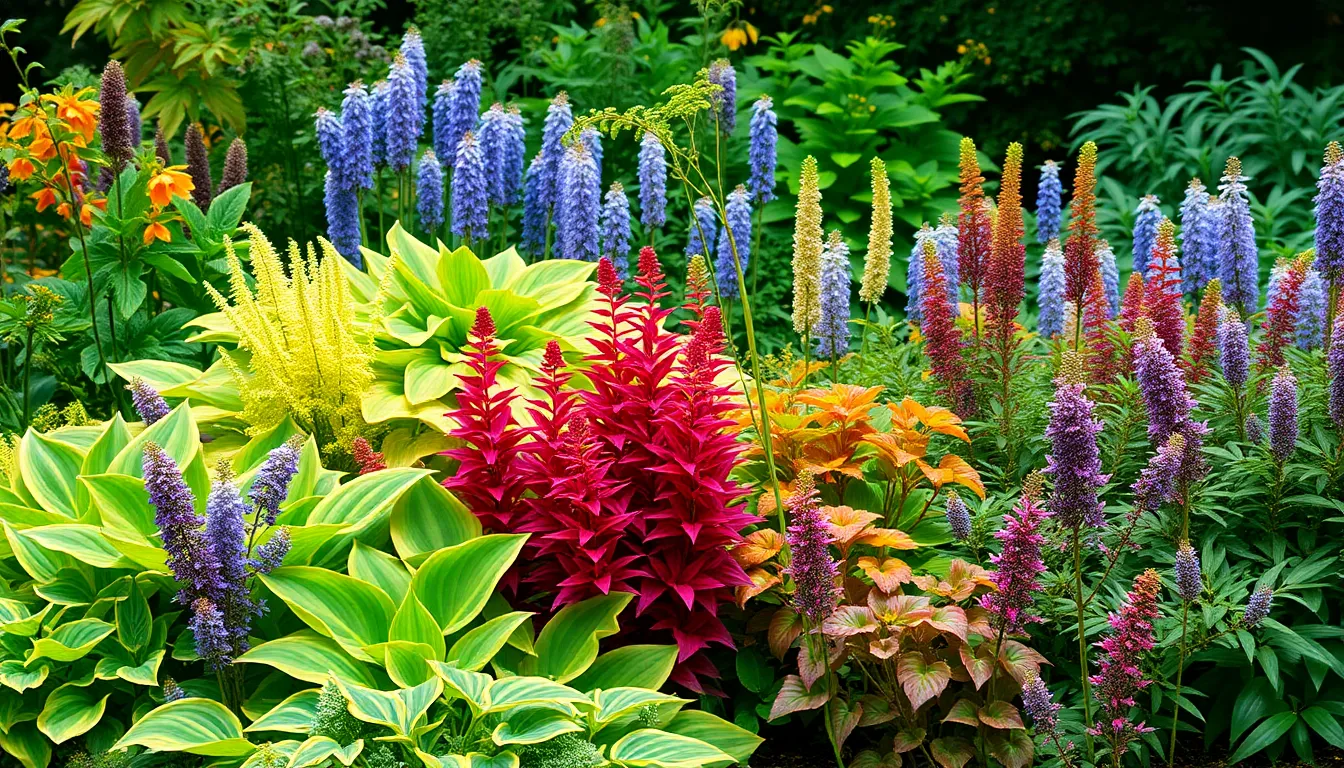
Perennials offer lasting beauty and value for outdoor low light gardens since they return year after year. We’ve identified the most reliable shade loving perennials that create stunning texture and color combinations.
Hostas for Lush Green Ground Cover
Hostas stand as the ultimate shade perennial choice for creating expansive ground coverage in low light areas. These classic plants feature broad, attractive foliage that brightens dim garden spaces with varied leaf colors and patterns. We recommend varieties like the miniature Hosta ‘Mini Skirt’ which tolerates dry shade conditions exceptionally well.
Thriving in part to full shade environments, hostas prefer moist, well drained soil for optimal growth. Many gardeners appreciate how these plants adapt to different moisture levels while maintaining their lush appearance. Ground coverage becomes effortless when hostas spread naturally to fill shaded garden beds and create dense foliage carpets.
Astilbe for Feathery Textured Interest
Astilbe brings delicate, plume like flowers and rich foliage texture to shaded garden corners throughout the growing season. These perennials excel in spots with filtered sunlight or dappled shade where their feathery blooms create stunning visual contrast. We find astilbe particularly effective when planted alongside broad leaf companions like hostas.
Consistently moist soil conditions help astilbe reach its full potential in low light environments. The airy texture of astilbe flowers adds dimensional interest that transforms flat garden spaces into layered landscapes. Shaded spots become focal points when astilbe’s plumes sway gently in garden breezes.
Coral Bells for Year-Round Appeal
Coral bells provide exceptional versatility with colorful foliage ranging from deep purple and red to lime green throughout all seasons. These shade perennials perform reliably in part to full shade while tolerating various soil conditions when drainage remains adequate. We appreciate how coral bells maintain their vibrant colors even in challenging low light situations.
Year round visual interest comes naturally with coral bells since their foliage stays attractive beyond typical flowering periods. Some cultivars feature patented varieties with unique foliage patterns and flower combinations that enhance garden diversity. Low light gardens gain both texture and sustained color when coral bells establish their presence in shaded beds.
Pick Foliage Plants That Add Texture and Interest
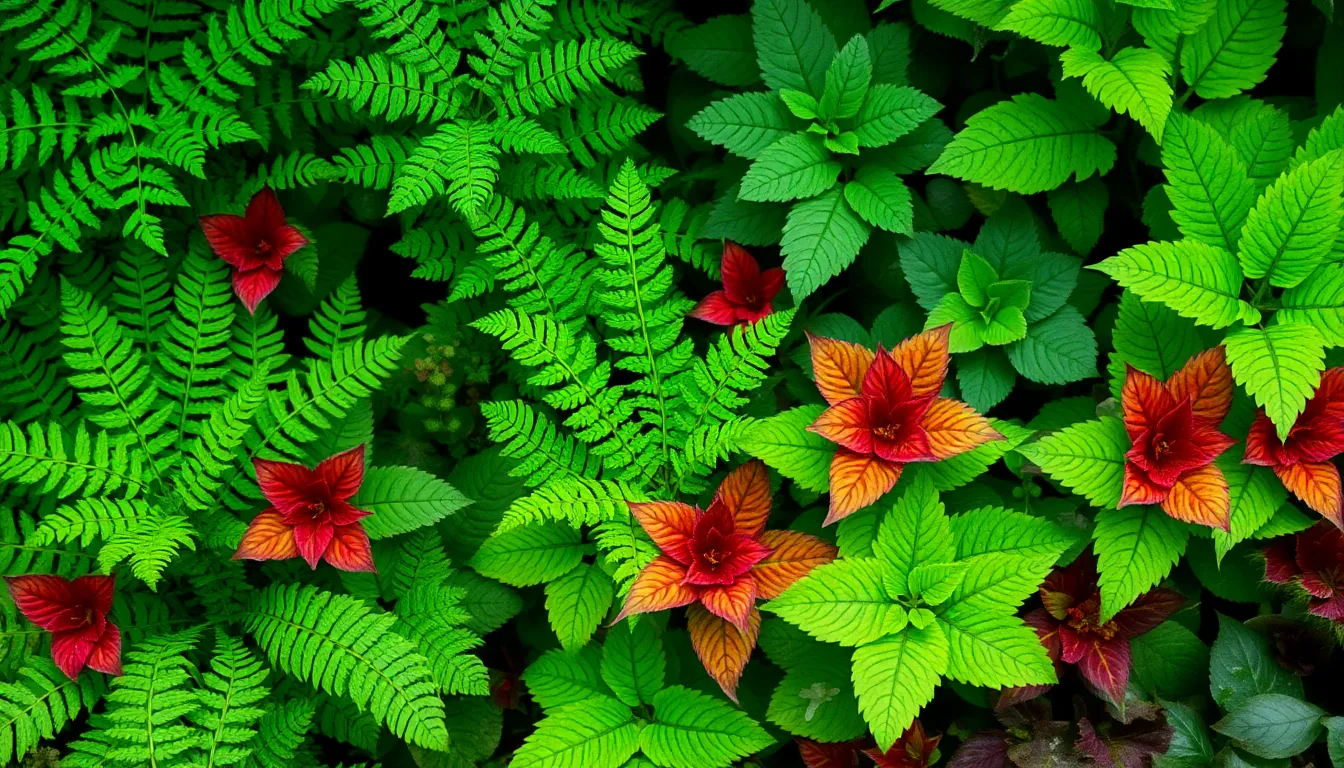
Beyond flowering plants, we can create stunning visual impact with foliage plants that thrive in low light conditions. These plants offer year round interest through their distinctive leaves, textures, and growth patterns.
Ferns for Natural Woodland Appeal
Ferns create the perfect natural woodland atmosphere in our shaded outdoor spaces. Their delicate, feathery foliage adds softness and organic texture that complements other shade loving plants beautifully. We’ll find that popular fern varieties tolerate full to partial shade while thriving in moist, well draining soil conditions.
Most ferns enhance shady garden beds and borders with their lush greenery that remains attractive throughout the growing season. They work exceptionally well as foundation plantings or as backdrop plants for smaller shade perennials. We can count on ferns to fill in gaps and create natural transitions between different garden areas.
Coleus for Bold Colorful Leaves
Coleus plants deliver striking visual impact with their colorful foliage in vibrant shades of red, purple, green, and yellow. These easy care plants thrive in part shade to full shade conditions, providing brilliant color where traditional flowering plants might struggle. We’ll appreciate how coleus adds bold texture and visual interest without requiring intensive maintenance.
Their versatile nature makes them ideal for shade containers, borders, or mixed garden beds. Coleus plants offer us the opportunity to create dramatic color combinations and patterns using only foliage. We can mix different coleus varieties to achieve layered color effects that last from spring through fall.
Lamium for Silver Spotted Ground Cover
Lamium excels as a hardy ground cover that flourishes in shaded areas with minimal sunlight requirements. Its distinctive silver spotted leaves brighten dark corners of our gardens while creating attractive contrast patterns. Small, colorful flowers complement the foliage and add seasonal interest to the ground level plantings.
This spreading plant effectively covers soil, suppresses weeds, and provides contrasting texture beneath taller shade tolerant plants. We can rely on lamium to fill difficult spaces where other ground covers might fail. The plant’s ability to spread naturally makes it perfect for creating unified plantings across larger shaded areas.
Consider Climbing Vines for Vertical Low Light Spaces
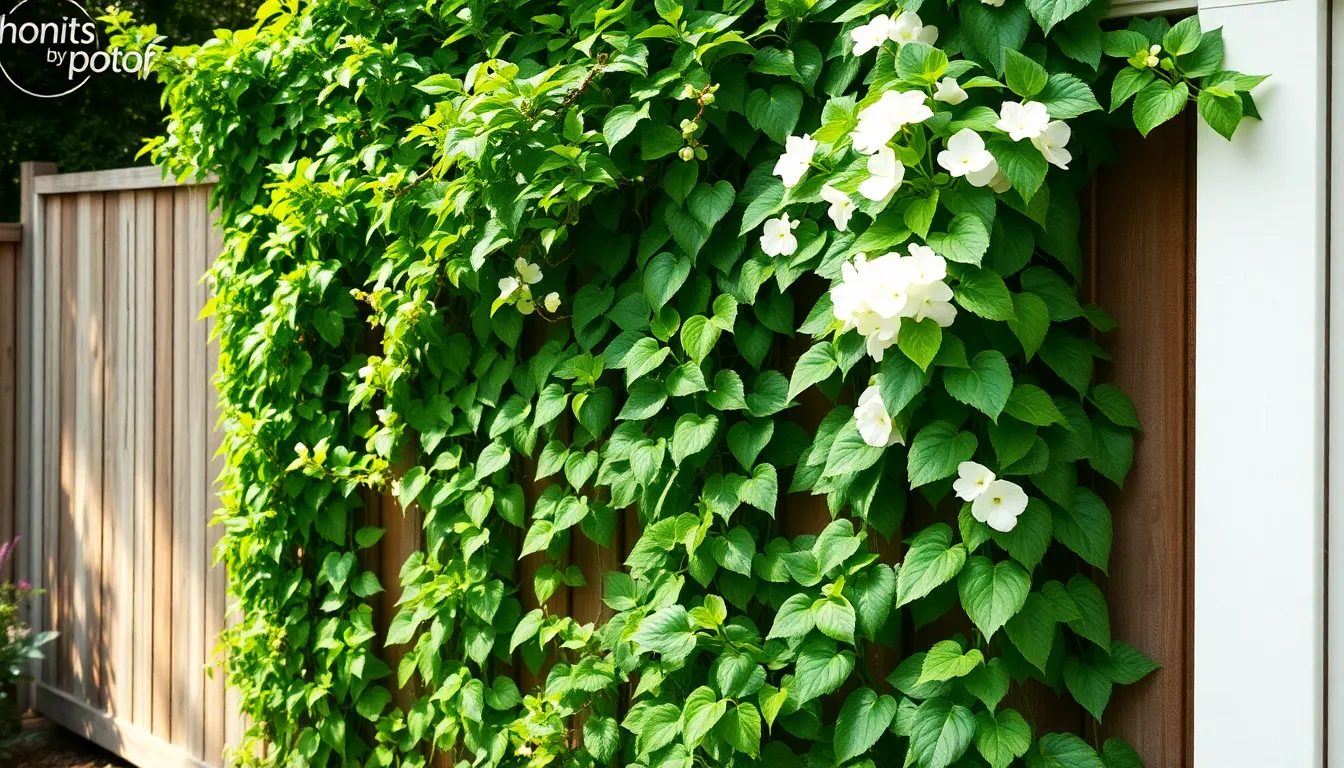
Climbing vines offer an excellent solution for transforming vertical surfaces in your shaded outdoor areas. These versatile plants can create stunning living walls while thriving in low light conditions where other plants might struggle.
English Ivy for Evergreen Coverage
English Ivy (Hedera helix) delivers consistent year-round greenery that transforms bare walls and fences into lush vertical gardens. This evergreen vine performs exceptionally well in shaded environments, making it perfect for north-facing walls or areas under tree canopies.
We recommend English Ivy for its remarkable resilience to water and nutrient competition commonly found in shaded spaces. The vine’s ability to maintain vibrant foliage throughout all seasons ensures your vertical garden remains attractive even during winter months.
Supplemental watering becomes necessary during particularly dry periods, though English Ivy generally adapts well to varying moisture levels. Its dense coverage creates an ideal backdrop for other shade plants while providing privacy screening for outdoor living spaces.
Virginia Creeper for Seasonal Color Changes
Virginia Creeper (Parthenocissus quinquefolia) brings ever-changing seasonal interest to your low light vertical spaces with its spectacular fall color transformation. This deciduous vine adapts beautifully to shaded conditions while offering visual drama throughout the growing season.
Bright red autumn foliage creates stunning displays that can brighten even the darkest corners of your garden. The vine’s ability to thrive in various soil moisture levels makes it an excellent choice for challenging low light locations.
Climbing capabilities allow Virginia Creeper to cover fences, trellises, and walls effectively while tolerating the competitive growing conditions often found in shaded areas. Its seasonal variation provides year-round interest that changes with each passing season.
Climbing Hydrangea for Stunning White Blooms
Climbing Hydrangea (Hydrangea anomala petiolaris) produces spectacular white flower clusters that illuminate shaded vertical spaces during early summer. This shade-adapted vine thrives in partial to full shade conditions where many flowering plants fail to bloom.
Slower growth rates result in more manageable coverage while still providing impressive floral displays that brighten dark garden areas. The vine’s specialized physiology allows it to photosynthesize efficiently in low light conditions.
Texture and seasonal bloom interest combine to create stunning focal points on walls, arbors, and large tree trunks. We’ve found that Climbing Hydrangea tolerates root competition from nearby trees while still producing reliable blooms each season.
Morning watering prevents fungal diseases that can affect shade plants, while soil enrichment with compost supports healthy growth in competitive root environments.
Plant Bulbs That Naturalize in Shaded Areas
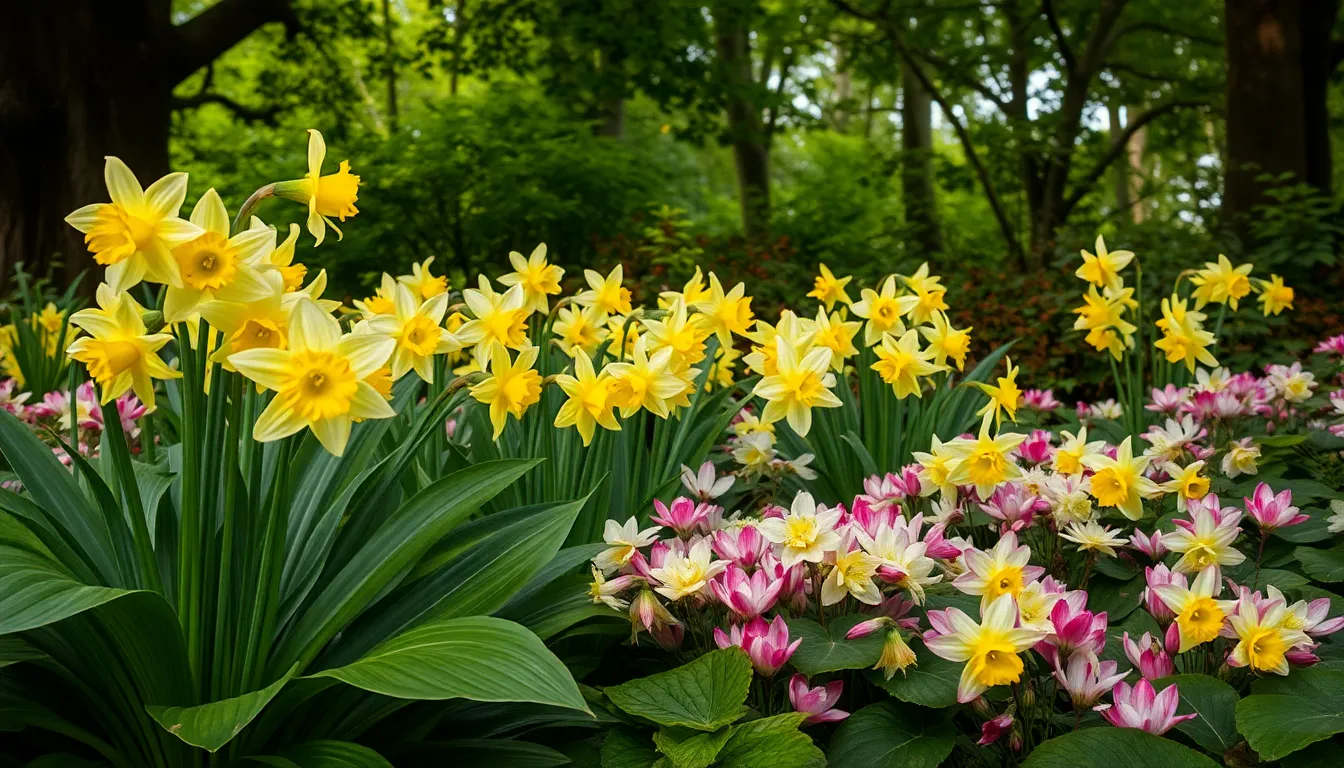
Bulbs offer an incredible opportunity to establish seasonal color cycles in shaded gardens that return year after year with minimal maintenance. These naturalizing varieties multiply over time and create stunning displays that complement the perennials and foliage plants we’ve already explored.
Daffodils for Early Spring Color
Daffodils bring the first cheerful blooms to our shaded gardens when winter finally loosens its grip. These classic spring bulbs naturalize beautifully under trees and in woodland settings where their bright yellows and whites create stunning early season displays. We love how they emerge before tree canopies fully leaf out, taking advantage of increased light levels during this transitional period.
Planting daffodils in fall ensures we’ll have reliable spring color for years to come. Their foliage dies back cleanly after blooming, making room for companion plants like hostas and ferns to fill the space throughout summer. Large varieties like ‘King Alfred’ work well in naturalized drifts, while smaller species like Narcissus cyclamineus thrive in more intimate woodland settings.
Caladium Bulbs for Summer Drama
Caladiums transform shaded areas into tropical showcases with their large, dramatically patterned leaves throughout the warm months. These tropical bulbs excel where traditional flowering plants might struggle, offering bold foliage in combinations of pink, red, white, and green that rival any bloom display. We particularly appreciate how they thrive in the warm, humid conditions often found in shaded microclimates.
Starting caladium bulbs indoors gives us earlier season impact, though we can plant them directly in warm soil after frost danger passes. Varieties like ‘White Christmas’ brighten the darkest corners, while ‘Red Flash’ adds vibrant color that complements the coral bells and coleus we might have planted nearby. Their performance in containers makes them perfect for adding moveable drama to shaded patios and decks.
Cyclamen for Fall and Winter Interest
Cyclamen extend our shaded garden’s beauty into the cooler months when most other plants enter dormancy. These remarkable bulbs produce delicate, nodding flowers in shades of pink, white, and purple that seem to dance above their attractive, often silver-marked foliage. We find their fall and winter blooming particularly valuable for maintaining garden interest during quieter seasons.
Hardy cyclamen species like Cyclamen hederifolium naturalize wonderfully in woodland conditions, creating carpets of color that expand year after year. Their preference for well-drained soil and dappled shade makes them ideal companions for established trees and shrubs. Unlike their indoor counterparts, these outdoor cyclamen tolerate freezing temperatures and provide months of blooms when few other plants are active.
Group Plants by Light Requirements for Best Results
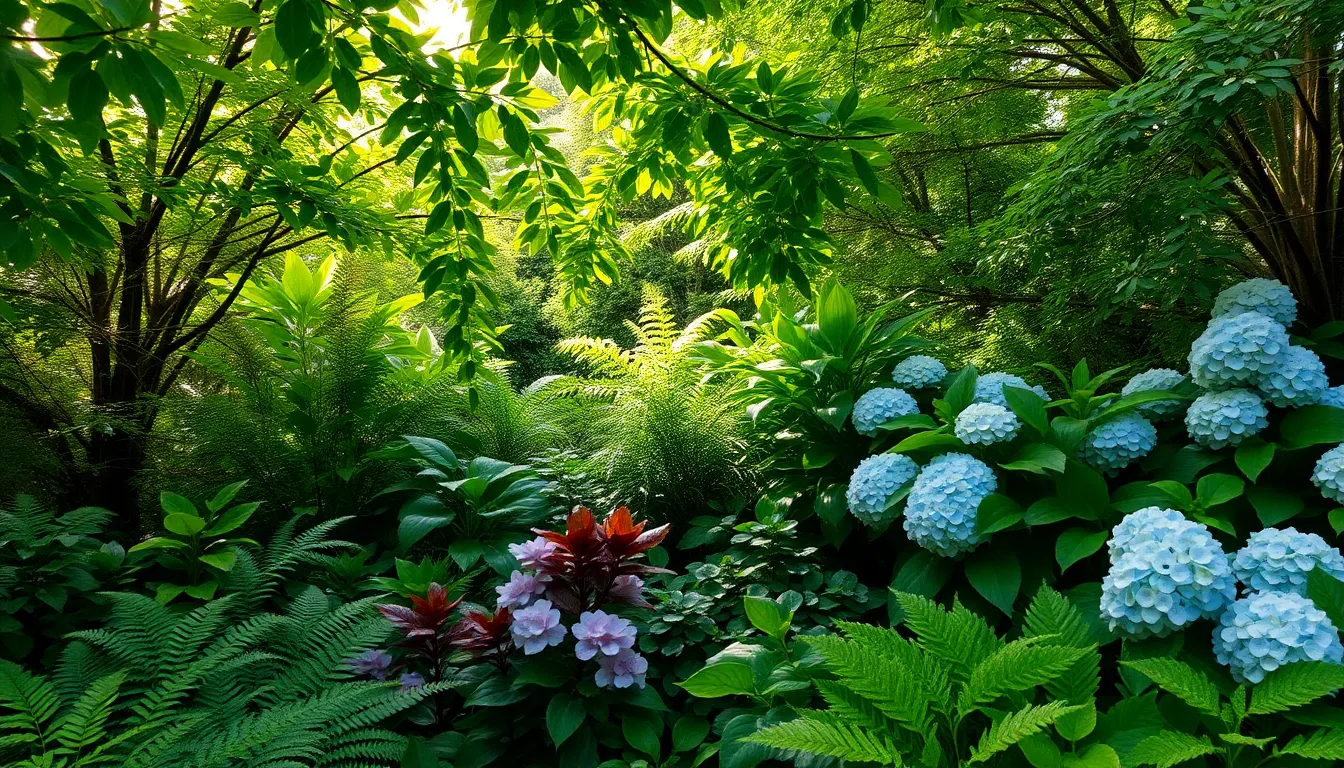
Successful shade gardening starts with understanding your outdoor space’s unique light conditions. We’ll help you select the perfect plants by categorizing them according to their exact sunlight needs.
Full Shade Plants for Deep Shadow Areas
Deep shadow areas receiving 0-4 hours of direct sunlight daily require plants that’ve adapted to thrive in minimal light conditions. These resilient species bring texture and vibrant color to garden spots that would otherwise remain barren.
Ferns like Lady Ferns excel in these challenging conditions, growing beautifully in near-complete darkness with their light-green to dark-green fronds creating natural woodland elegance. Their delicate foliage adds movement and softness to the darkest corners of your garden.
Astilbe ‘Visions’ produces feathery plumes of flowers that illuminate deep shade areas throughout the growing season. This hardy perennial combines striking blooms with rich, textured foliage that maintains visual interest even after flowering ends.
Coral Bells such as Dolce® ‘Spearmint’ offer year-round color through their vibrant foliage, ranging from chartreuse to deep burgundy. These compact plants work perfectly as ground cover or accent pieces in shadowy garden beds.
Specialty shade shrubs like Aralia ‘Sun King’ and Aruncus ‘Chantilly Lace’ provide structure and height to deep shadow gardens. Their architectural forms create focal points while their adapted leaves capture every available ray of filtered light.
Partial Shade Options for Dappled Light
Partial shade locations that receive filtered or dappled sunlight throughout the day support a broader range of shade-tolerant plants. These areas offer the perfect balance between protection and light exposure.
Hostas remain the cornerstone of partial shade gardening, with their striking variegated leaves creating dramatic displays in dappled light conditions. Their diverse sizes and leaf patterns allow for endless design possibilities from small border edging to large specimen plantings.
Pulmonaria stands out as an easy-care perennial that thrives in filtered light, featuring spotted leaves that add visual texture year-round. Spring brings delicate flowers in shades of pink, blue, and white that brighten the garden during the cooler months.
Hydrangeas flourish in partial shade environments, producing abundant blooms when they receive gentle morning sun followed by afternoon protection. Their large flower clusters create stunning seasonal displays while their foliage provides excellent backdrop for smaller shade plants.
Morning Sun Varieties for Eastern Exposures
Eastern exposures provide gentle morning sunlight followed by afternoon shade, creating ideal conditions for plants that need some direct light but can’t tolerate intense heat. This unique lighting situation prevents stress while ensuring adequate photosynthesis.
Hydrangeas particularly benefit from morning sun exposure, using those cooler daylight hours to produce bountiful flowers throughout the growing season. The combination of morning light and afternoon shade prevents leaf scorch while maintaining optimal bloom production.
Chaenomeles (flowering quince) adapts beautifully to morning sun conditions, surviving and thriving in these relatively shaded environments. Early spring brings spectacular displays of colorful flowers before the leaves emerge, followed by interesting fruit and attractive branching structure.
Morning sun plants generally require 2-4 hours of direct sunlight during cooler morning hours, making them perfect for eastern-facing garden beds, patio areas, and foundation plantings. This light pattern mimics natural woodland edge conditions where many shade-tolerant species originally evolved.
Maintain Your Low Light Outdoor Garden Successfully
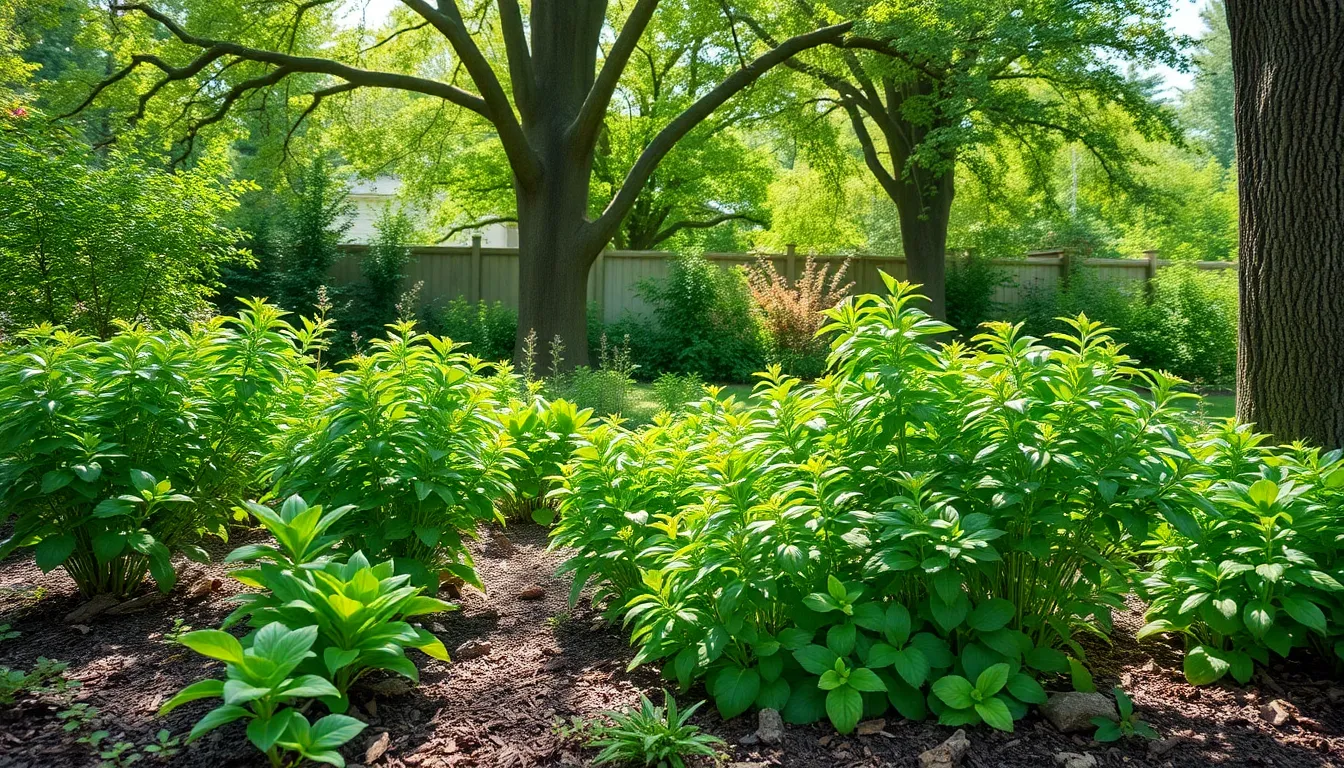
Creating a thriving shade garden requires consistent care customized to the unique needs of low light plants. Our shade loving plants need different maintenance approaches than their sun loving counterparts.
Proper Watering Techniques for Shade Plants
Shade plants generally prefer consistent moisture but face unique challenges in low light conditions. We need to assess soil moisture carefully before watering since overwatering leads to problems like mildew and stem rot in shaded areas. Deep watering sessions work better than frequent shallow applications because they encourage healthy root development.
Consistent moisture levels matter more than heavy watering schedules for most shade plants. During dry spells, we should pay close attention to watering needs while avoiding waterlogged soil conditions. Mulching around plants helps maintain soil moisture and reduces our watering frequency significantly.
Water only when soil feels dry to the touch rather than following rigid schedules. This approach prevents the soggy conditions that promote fungal diseases in shaded gardens. Well draining soil combined with proper watering techniques creates the ideal environment for low light plants to flourish.
Fertilizing Schedule for Optimal Growth
Shade plants have lower metabolic demands than sun plants, so we need to fertilize them more moderately. A balanced, slow release organic fertilizer applied twice per year provides optimal nutrition without overwhelming these gentler plants. Early spring and mid summer applications align perfectly with their natural growth cycles.
Some shade gardens benefit from biweekly light fertilizer applications during the growing season. We should adjust feeding schedules based on exact plant requirements rather than using one size fits all approaches. Over fertilizing shade plants can actually harm them and increase their susceptibility to diseases.
Organic fertilizers work particularly well in shaded conditions because they release nutrients slowly. This gradual feeding matches the slower growth patterns typical of low light plants. Monitor plant responses to fertilization and reduce frequency if we notice excessive soft growth or increased pest problems.
Pruning and Seasonal Care Tips
Remove dead leaves, branches, and winter debris in early spring to prepare plants for new growth cycles. We should apply fresh mulch layers during this time to retain soil moisture and suppress weeds throughout the growing season. Regular monitoring helps us catch pest and disease issues early, which is especially important in shaded areas with higher humidity.
Proper plant spacing improves air circulation and reduces disease risks significantly. Dense growth should be thinned occasionally to promote better airflow around foliage. Deadheading spent flowers encourages continued blooming in flowering shade plants.
Spring and summer maintenance focuses on removing debris, refreshing mulch, and monitoring overall plant health. Some shade plants enter dormancy during hot summer months, requiring adjusted care routines. Prune damaged or yellowing foliage promptly to maintain plant health and garden appearance throughout the seasons.
Conclusion
We’ve shown you that shaded outdoor spaces don’t have to be boring or lifeless. With the right plant selections and proper care techniques your low-light areas can become some of the most beautiful parts of your garden.
The key to success lies in understanding your exact light conditions and choosing plants accordingly. Whether you’re working with full shade or dappled morning light there’s always a perfect plant combination waiting to transform your space.
Remember that shade gardening offers unique advantages too. These areas typically require less watering and maintenance while providing cool retreats during hot summer months. Your shade garden can become a peaceful sanctuary that thrives year-round with minimal effort.
Start small and experiment with different combinations to discover what works best in your exact conditions. We’re confident you’ll soon fall in love with the lush beauty that shade plants bring to your outdoor spaces.
Frequently Asked Questions
What are the best flowering plants for low-light outdoor spaces?
The top flowering plants for shaded areas include impatiens for continuous blooms, begonias for low-maintenance beauty, and astilbe for feathery, colorful flowers. These plants thrive in dim conditions while providing vibrant color throughout the growing season, making them perfect for shaded patios and north-facing garden beds.
Which foliage plants work well in shade gardens?
Excellent foliage options for shade include hostas with their varied leaf colors and patterns, coleus for bold colorful leaves, and ferns for delicate woodland texture. Lamium serves as hardy ground cover with silver-spotted leaves, while caladiums offer dramatic tropical foliage during summer months.
Can climbing vines grow in low-light conditions?
Yes, several climbing vines thrive in shade. English Ivy provides evergreen coverage year-round, Virginia Creeper offers stunning red autumn color, and Climbing Hydrangea produces spectacular white blooms in early summer. These vines can transform bare walls into living displays in shaded areas.
What bulbs naturalize well in shaded gardens?
Daffodils bloom early in spring before tree canopies leaf out, caladiums provide vibrant summer color in shaded microclimates, and cyclamen offer fall and winter interest with delicate flowers. These bulbs expand naturally year after year with minimal maintenance in woodland conditions.
How should I group plants in my shade garden?
Group plants by their specific light requirements: full shade plants like Lady Ferns for deep shadow areas, partial shade varieties like hostas for dappled light conditions, and morning sun plants like hydrangeas for eastern exposures that receive gentle morning sunlight.
What are the key care tips for shade garden plants?
Maintain consistent moisture without overwatering to prevent mildew, apply moderate organic fertilizers to match lower metabolic demands, and follow seasonal care routines including pruning and debris removal. Monitor plant health regularly to ensure optimal growing conditions throughout the season.
Do shade gardens require different watering techniques?
Yes, shade plants need consistent moisture but proper drainage to prevent root rot and fungal issues. Water deeply but less frequently than sun plants, and ensure good air circulation. Avoid overhead watering in humid conditions to prevent mildew and other moisture-related problems.

